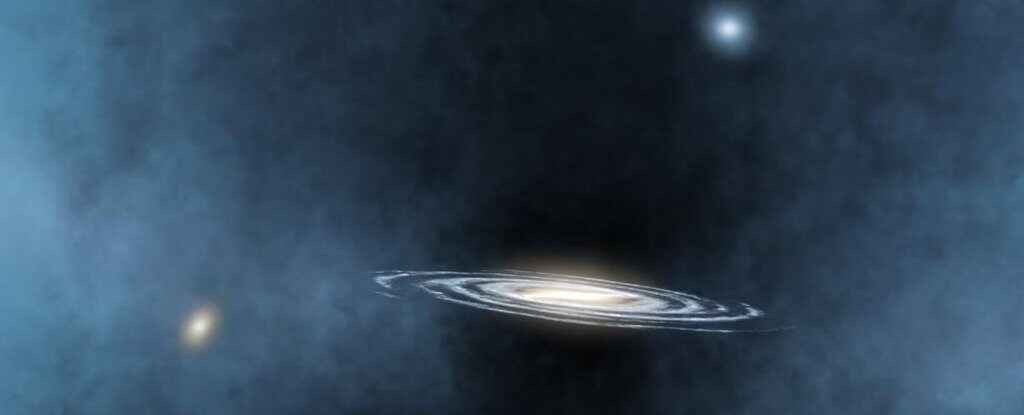
Even with masses equal to billions of suns, these gargantuan objects are still mere pinpricks in the vast galactic core, making a recent discovery of just how far their power might reach all the more surprising.
A team of astronomers and astrophysicists from around the globe have uncovered signs that the supermassive black holes in the hearts of many galaxies not only affect the distribution of stars in their own immediate surroundings but shape those of nearby galaxies as well.
By analyzing archival data on nearly 125,000 satellite galaxies circling tens of thousands of heavier masses, the team identified a link between the number of new stars being born in an orbiting cluster and its position.
"Surprisingly we found that the satellite galaxies formed more or fewer stars depending on their orientation with respect to the central galaxy," says astronomer Annalisa Pillepich from the Max Planck Institute for Astronomy.
In recent years, it's become increasingly clear that the violence raging in the crowded nuclei of huge galaxies is more than capable of carving the cosmic landscape into zones of famine and feast.
Dust and gas pulled into the extreme gravity wells of objects like supermassive black holes not only glow with intense radiation but are reduced to a high-speed blur of plasma that generates magnetic fields, in turn hurtling off particles at insane velocities.
These winds of plasma and light have two seemingly contradictory effects.
They can sweep entire regions of space clear of material that might otherwise collapse into new stars in a phenomenon known as quenching. Or they can provide the push necessary to pile material into clouds dense enough to clump into infant suns.
While astronomers continue to figure out the processes involved in determining the fate of individual galaxies, Pillepich and her colleagues decided to look further afield. They relied on the product of a project called Illustris-TNG, which models various physical processes to simulate galaxy formation.
Comparisons between the simulation and actual galaxies swirling together under the pull of dark matter supported the idea that the quenching effect of a galaxy's nucleus could reach far out.
Satellites lying along the minor axis of the central galaxy - the shorter radius of an ellipse - seemed to be more fertile than those found elsewhere.
"Just as with the observations, the Illustris-TNG simulation shows a clear modulation of the star formation rate in satellite galaxies depending on their position with respect to the central galaxy," says Pillepich.
On the surface, the findings don't make a lot of sense. Without less 'stuff' to push past, more radiation and particles should in theory escape along the minor axis, effectively snuffing out any stellar candles as the satellite galaxies slink by.
Yet the researchers argue that far from being counterintuitive, this galactic wind should carve out low-density bubbles in surrounding space, a hypothesis supported by the Illustris-TNG simulation. The diffuse bubbles could potentially protect orbiting galaxies from quenching effects, allowing them to blossom with baby stars where others fizzle.
There is also an alternative possibility that can't be ruled out.
"We cannot in fact exclude a different scenario, whereby the star-formation activity of the satellites is enhanced rather than their quenching suppressed," the researchers write in their report.
Fine-tuning simulations with better data and collecting more observations could reveal which of these explanations - if either - best explains the boom or bust of galactic families as ruled by their tyrannical lords.
This research was published in Nature.



Comment: A recent study revealed that galaxies throughout our universe are surprisingly similar, and this may be because the same forces involved in their formation are, rather than working in isolation, in some way connected:
- Why the sun's atmosphere is hundreds of times hotter than its surface
- Milky Way not unusual, surprising astronomers
- Magnetic fields may be secret to planetary formation, supercomputer model reveals
And check out SOTT radio's: